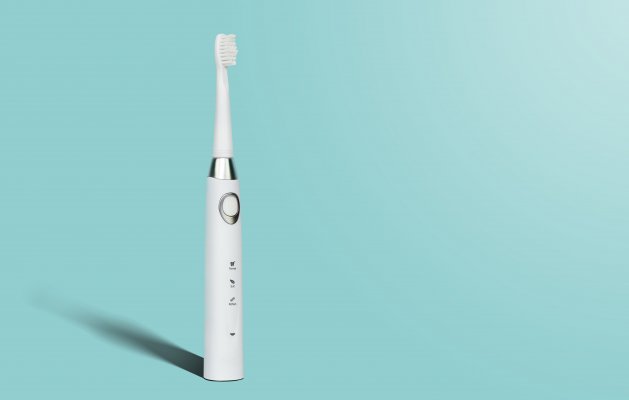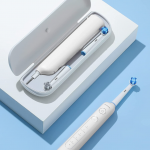For perfect dental health, dentists around the world advise us to brush our teeth twice a day and spend two minutes for every brushing session. To increase the effectiveness of each brushing session, many people prefer to use a special toothbrush, such as an electric toothbrush.
But while an electric toothbrush is better at cleaning your teeth than a manual toothbrush, it still won't give you the level of cleanliness that you desire. The reason is simply because an electric toothbrush can't sever the bonds that cause the plaque to stick to the teeth in the first place.
The only toothbrush that could do such a thing is an ionic toothbrush. But you might be wondering, what is an ionic toothbrush? How does it work? How to use it? And is it really better than a manual or an electric toothbrush? This brief article will answer all of those questions for you.
An ionic toothbrush is a toothbrush that uses a chemical principle known as ionic bonds in order to clean the plaques out of your teeth. When it comes to removing plaques, an ionic toothbrush is clearly superior to either a manual toothbrush or an electric toothbrush.
One study from Marquette university even found that an ionic toothbrush could remove 48 percent more plaque than any other type of toothbrush. After using an ionic toothbrush, you would feel that clean sensation that you'd often feel after a visit to a dentist.
Ionic bonds are all about the polarity charged of things. The opposite polarity will attract each other while an identical polarity repels each other. But with the right method, it is possible to change the polarity charge of something.
A tooth is negatively charged while the plaque is positively charged. That’s why plaque would always attract and stick to the teeth. As long as their ionic bonds exist, no amount of scraping and brushing could totally tear them apart.
And that is the main difference between ionic toothbrushes and other types of toothbrushes. When in use, an ionic toothbrush would create small static electricity that would make the toothbrush to be negatively charged. It is only a trace amount of electricity, so you won't notice it. But it has enough power to do its job.
So when you brush your negatively charged teeth with a negatively charged ionic toothbrush, your teeth' polarity would temporarily turn into positively charged. And since both the teeth and the plaque have an identical charge, they will repel each other.
And that is how an ionic toothbrush is capable of having a much higher plaque removal rate than any other type of toothbrush.
Inside an ionic toothbrush handle is a small battery that is connected to a titanium rod that runs along the length of the toothbrush. On the external part of the toothbrush is a thin metal plate. The size and the shape of the metal plate may differ from one brand to the next, but the thickness should be identical.
To use an ionic toothbrush, you need to wet your hand first. Then, grip the handle of the brush and lightly press the thin metal plate with your moist thumb. It would initiate the static electricity needed to disrupt the ionic bonds between the teeth and the plaque.
After that, all you need to do is simply brush your teeth as usual. You should thoroughly brush your teeth so that all the plaque could be removed. But there's no need to put any power behind your brushing. Because as long as the brush head could touch the teeth, then it should do its job perfectly.
Because of its nature to take advantage of the principle of the ionic bond to force the teeth to repel plaque, ionic toothbrushes are clearly superior to both manual and electric toothbrushes. While both toothbrushes could only try to scrape the surface of your teeth as hard as possible, an ionic toothbrush could easily remove all of the plaque on your teeth.
Another advantage that an ionic toothbrush has over other toothbrushes is the fact that it could work great even without the use of toothpaste. Yes, in order for an ionic toothbrush to remove the plaque from your teeth, it doesn't require any toothpaste at all.
You could use the paste for other purposes, such as for whitening or strengthening your teeth. Or maybe you have a particular condition that requires a specific kind of toothpaste. You could use the toothpaste with an ionic toothbrush as usual. But just know that it could do fine without it.
Cleaning your teeth and removing the plaque is more than just trying to brush your teeth as hard as you could. Not only that it's not really effective, doing so could also potentially hurt your teeth and your gum. All you want is clean and healthy teeth but you’d end up with bleeding gum and brittle teeth.
A more effective and efficient way to go about it is by using an ionic toothbrush. As laid out in this article, an ionic toothbrush works by working directly to the source of the problem, which is the ionic bond between the teeth and the plaque. You should definitely give an ionic toothbrush a try.





